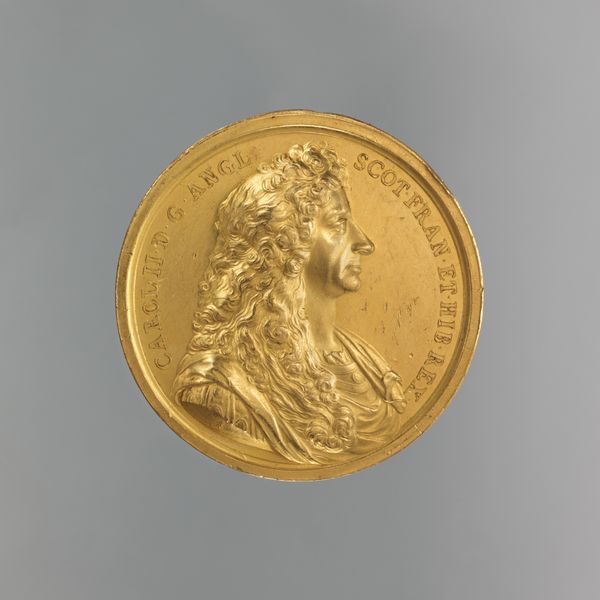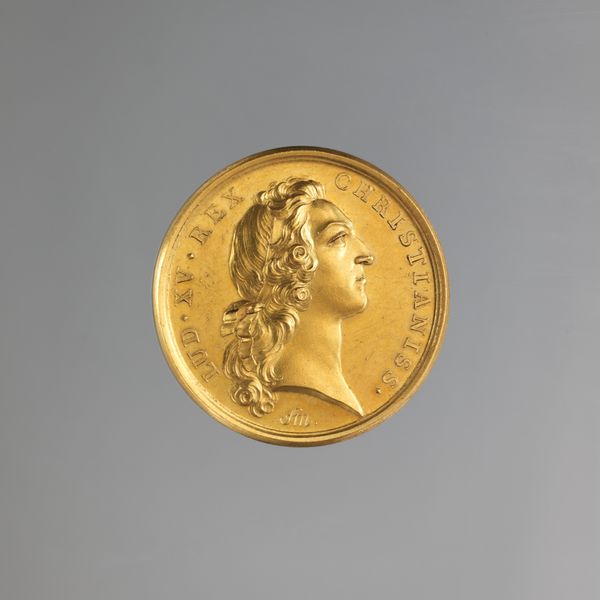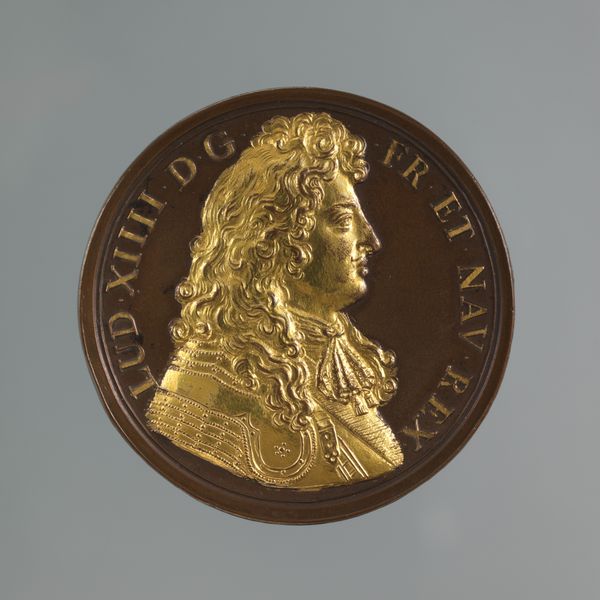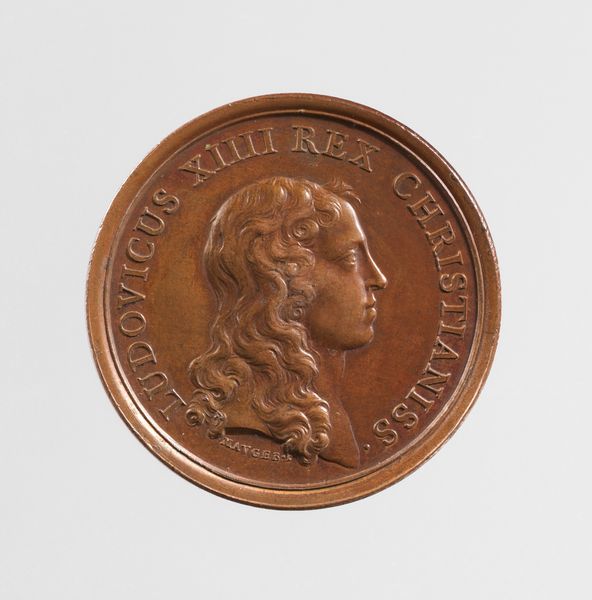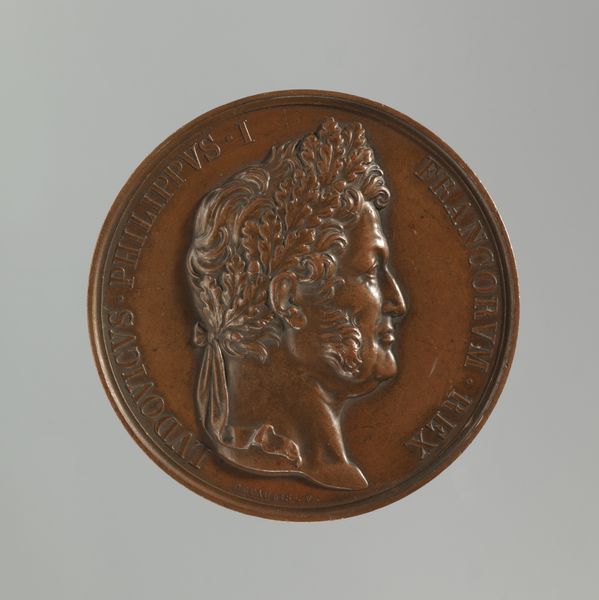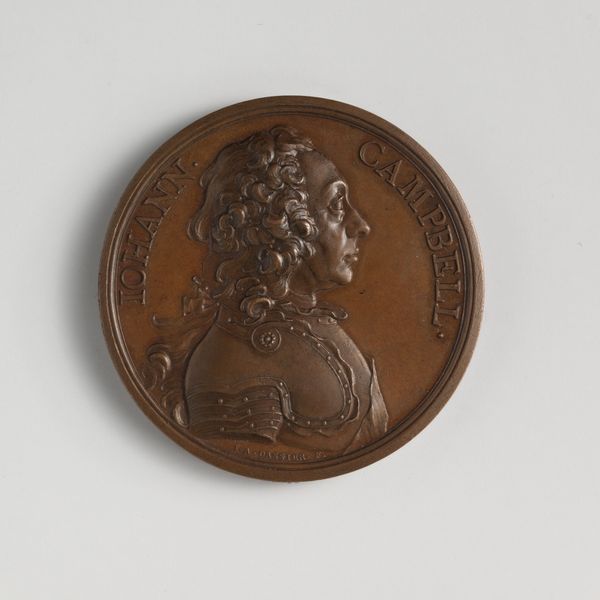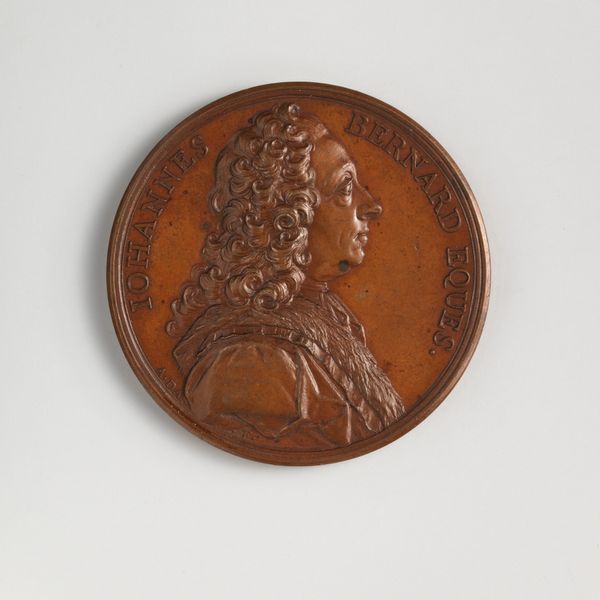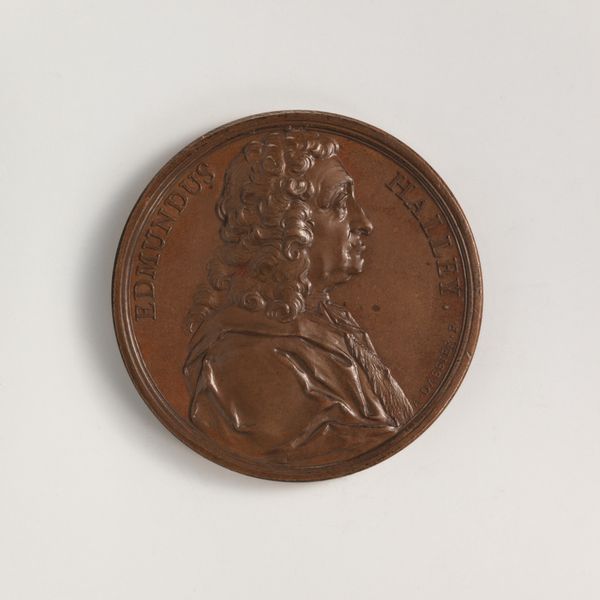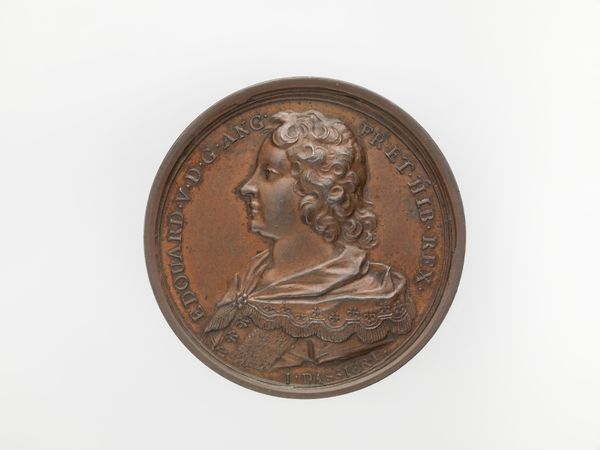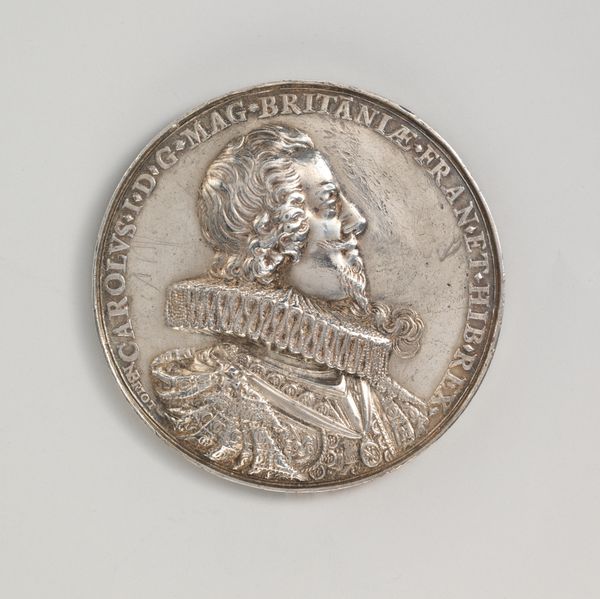
Louis XIV: Birth of the duc de Berry, 31 August 1686 1693
0:00
0:00
bronze, sculpture
#
portrait
#
medal
#
baroque
#
sculpture
#
bronze
#
sculpture
#
history-painting
#
decorative-art
Dimensions: Confirmed: 3/16 × 1 5/8 in. (0.5 × 4.1 cm)
Copyright: Public Domain
Editor: This bronze sculpture, made by Jean Mauger in 1693, is titled "Louis XIV: Birth of the duc de Berry, 31 August 1686." It's surprisingly small, but the level of detail is really striking. The golden portrait of Louis XIV pops out. I'm curious, focusing on the form, what elements of composition and materiality stand out to you? Curator: The juxtaposition of the bronze background with the gold portrait immediately seizes the eye. Notice how the artist manipulates texture. The smoothness of the bronze provides a stark contrast to the intricate detail rendered in the golden portrait of Louis XIV. Consider, too, the semiotic implications of the circular format. Editor: A semiotic circle? That makes me think about wholeness or continuity, maybe even a cycle. Curator: Precisely. And what does the inscription around the portrait suggest? Editor: It says, "Ludovicus Magnus Rex Christianissimus". That’s Latin... so "Louis the Great, Most Christian King?" How does that fit? Curator: The inscription works to reinforce the idealized image of the monarch, further emphasizing not only his power but also his divinely sanctioned authority. What meaning do you extract from that contrast of textures and inscriptions now? Editor: It appears that every material element underscores the intended message: an opulent celebration of royal power legitimized by religious authority. This gilded profile is far more than just decoration. I hadn’t noticed that so many layers can be read into such a small object. Curator: Indeed. Formal analysis allows us to excavate and comprehend a piece's intricate meaning through a focus on its construction and use of materials, bringing to light historical and cultural messages embedded within the visual object itself.
Comments
No comments
Be the first to comment and join the conversation on the ultimate creative platform.


